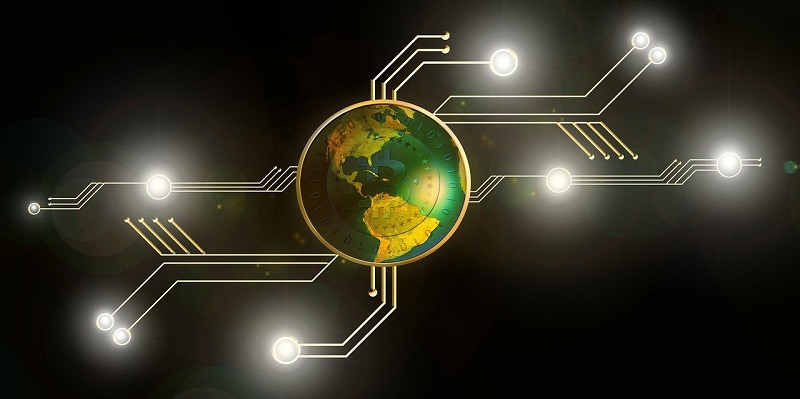Crypto airdrops have become a popular method for distributing free tokens to the vibrant cryptocurrency community. However, not all airdrops are created equal. In this article, we will delve into the latest developments in crypto airdrops and explore a range of cutting-edge Layer 2 solutions. By evaluating the potential value and benefits of participating in airdrops, we can make informed decisions and stay ahead in the dynamic world of cryptocurrencies.
Selective Approach to Airdrops
While airdrops may seem enticing at first glance, it’s crucial to be discerning about which ones are worth your time and attention. With a plethora of projects vying for attention through token giveaways, it’s essential to evaluate their potential value before participating. Factors such as the team behind the project, their vision, technology, and long-term viability should be considered. Adopting a selective approach allows us to focus on airdrops that align with our investment strategies and interests.
Base: Coinbase’s Layer 2 Scaling Solution
To address the scalability issues faced by Ethereum, Coinbase has developed Base, a Layer 2 scaling solution. Base aims to enhance transaction speed and improve scalability on the Ethereum network. By utilizing off-chain transactions and bundling multiple transactions together, it reduces congestion and minimizes fees. Base offers a significant improvement to Ethereum’s efficiency and provides an innovative solution to the network’s scaling challenges.
MetaMask: A Popular Cryptocurrency Wallet
MetaMask has emerged as one of the most widely used and trusted wallets in the crypto world. Its user-friendly interface and seamless integration with various decentralized applications (dApps) have made it a preferred choice among enthusiasts. With MetaMask, users gain control over their digital assets, securely manage their private keys, and effortlessly interact with the decentralized ecosystem. Its popularity is a testament to its robust security features and user-centric design.
Layer Zero: Communication Protocol on Omnichain
Layer Zero is a revolutionary communication protocol that facilitates seamless communication and interoperability between different blockchain networks built on the Omnichain platform. By establishing a standardized framework, Layer Zero bridges the gap between chains, ensuring efficient data transfer and improving overall scalability. This communication layer plays a vital role in enabling collaboration, enhancing compatibility, and driving innovation across multiple blockchain networks.
StarkNet: Zero-Knowledge Layer 2 Solution
Starknet is a zero-knowledge Layer 2 scaling solution that addresses the limitations of conventional wallets. With an emphasis on privacy and efficiency, Starknet leverages zero-knowledge proofs to enable faster and more secure cryptocurrency transactions. By eliminating the need for on-chain computation, Starknet reduces costs and minimizes blockchain bloat. This innovative solution brings improved privacy and scalability to the crypto ecosystem.
Scroll: Privacy-Focused Zero-Knowledge Layer 2
Scroll is a zero-knowledge Layer 2 solution specifically designed to scale Ethereum while prioritizing user privacy. By employing advanced cryptographic techniques, Scroll protects user data and ensures that sensitive information remains confidential during transactions. With Scroll, users can conduct their blockchain activities with confidence, knowing that their privacy is upheld. This privacy-focused approach plays a crucial role in fostering trust and widespread adoption of blockchain technology.
Sei Network: Layer 1 Blockchain Based on Cosmos
Sei Network represents an exciting Layer 1 blockchain built on the Cosmos ecosystem. Leveraging the benefits of the Cosmos framework, Sei Network offers unparalleled scalability and interoperability. By utilizing the Tendermint consensus mechanism, Sei Network achieves consensus quickly and efficiently. Its modular structure promotes flexibility and enables seamless integration with other blockchain projects, fostering a robust and interconnected ecosystem.
zkSync: Efficient Utilization of the Ethereum Blockchain
With the goal of enhancing the efficiency of the Ethereum blockchain, zkSync provides a more scalable and cost-effective way to utilize the network. By employing zero-knowledge proofs and off-chain computing, zkSync significantly improves transaction speed and reduces fees. This Layer 2 solution is a game-changer for Ethereum, unlocking its full potential and enabling smooth, high-throughput blockchain operations.
Quai Network: PoW Security with Sharding Scalability
Quai Network combines the security of Proof-of-Work (PoW) with the scalability of sharding. By incorporating sharding into its underlying architecture, Quai Network enhances usability and resource optimization. It divides the blockchain into smaller, manageable partitions, allowing for parallel processing and increased throughput. This innovative approach improves scalability without compromising the network’s security, making Quai Network a promising contender in the blockchain space.
As crypto enthusiasts, it is essential to stay informed about the latest advancements in airdrops and Layer 2 solutions. By selectively participating in airdrops and evaluating their value, we can make wise investment decisions and avoid unnecessary distractions. Layer 2 technologies such as Base, MetaMask, Layer Zero, StarkNet, Scroll, Sei Network, zkSync, and Quai Network pave the way for a more scalable, efficient, and privacy-focused crypto ecosystem. Embracing these solutions allows us to navigate the evolving landscape of cryptocurrencies with confidence and seize the potential they offer.

